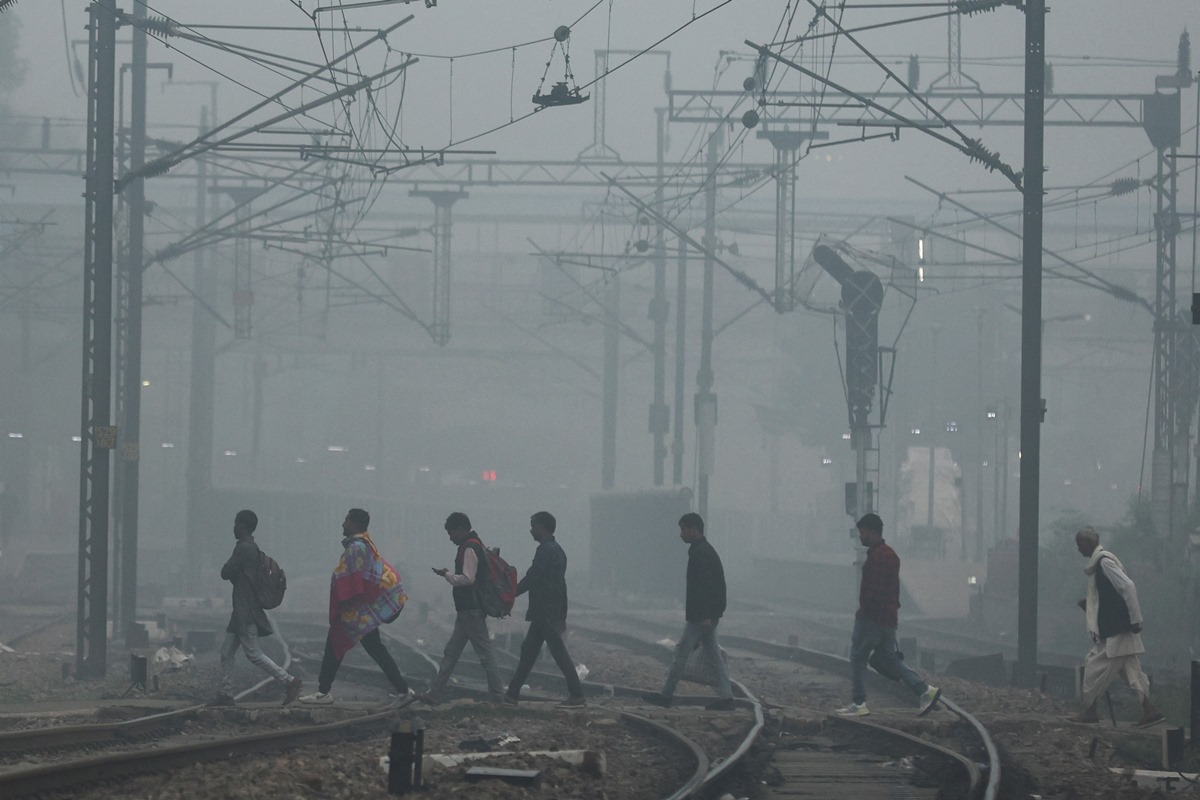Amid a deteriorating air quality situation in Delhi, the city is bracing for enhanced anti-pollution measures. The Air Quality Index (AQI) for Delhi has reached alarming levels, hitting an average of 475 at 11 a.m. This is even worse than the peak levels seen last year, which stood at 450, and those recorded in 2022, which reached 471. In comparison, 2020 had an AQI of 477, and 2019 saw levels as high as 494.
The current air quality crisis has led to a significant drop in visibility, with Safdarjung reporting just 600 meters and Palam a mere 500 meters due to a thick blanket of smog. This worrying trend was observed after Delhi’s 24-hour average AQI reached 392, coming dangerously close to the severe category, around 4 p.m. The situation continued to worsen, with the average AQI surging to 427 just before midnight.
Advertisement
The troubling scenario has forced authorities to consider stringent measures to combat air pollution. The Commission for Air Quality Management (CAQM) has scheduled a meeting for 1:30 p.m. on Friday to deliberate on the implementation of Stage 4 of the Graded Response Action Plan (Grap). Authorities deem this step necessary to address the deteriorating air quality, which has entered the severe category for the first time this season.
In an unfortunate turn of events, the smog tower located in Connaught Place, once hailed as a potential solution to combat air pollution, is currently non-operational. The facility was inaugurated with much fanfare by Chief Minister Arvind Kejriwal in August 2021. This development has left the citizens concerned, as they were hoping for its assistance in alleviating the worsening air quality.
The decision to close the smog tower might have stemmed from a recommendation by the Delhi Pollution Control Committee (DPCC). In October, the DPCC communicated with the Delhi government’s environment ministry. They presented findings from a two-year assessment of the facility’s performance. The evaluation showed that the reduction in particulate matter was 12-13% within a 100-meter radius of the tower. This information raises questions about the effectiveness of the smog tower in addressing the city’s air quality issues.
The authorities face a daunting challenge in curbing pollution and ensuring the well-being of the city’s residents. The closure of the smog tower indicates the urgency of the situation. The potential implementation of enhanced anti-pollution measures is a response to the worsening air quality in the city. These actions are necessary for immediate action to combat the deteriorating air quality.









